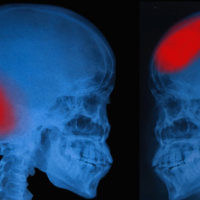Issues In Brain Injury Cases

After missing half of last season with concussion symptoms, NASCAR driver Dale Earnhardt Jr. is climbing back behind the wheel. If he develops serious symptoms later in life, who is legally responsible for this injury?
Two other drivers missed time last year for the same reason, prompting concerns about NASCAR’s safety. But managing director John Bobo insisted that this sport, like all other sports, has made tremendous progress in the past decade. NASCAR vehicles now contain event data recorders so engineers and other professionals can evaluate crashes. After such incidents, a doctor must evaluate all drivers, and if they show any signs of a concussion, they must undergo a full battery of tests. Some observers feel that these improvements are not enough. Neurologist Dr. Steve Olvey suggests that crew chiefs, mechanics, family members, and anyone else who comes into regular contact with drivers should know how to recognize a possible concussion.
In the end, however, the drivers themselves bear much of the risk. “I know it’s a dangerous sport,” Mr. Earnhardt remarked. “I’m taking and accepting a risk when I go out there.”
Traumatic Brain Injuries Causes and Symptoms
Sports-related concussions and other TBIs account for only a fraction of the 1.7 million victims every year. Yet no matter how they occur, the symptoms are always somewhat similar.
Participants in tackle football and girls’ soccer are the most at-risk groups for sports-related brain injuries. Some common non-sports causes include:
- Motor Vehicle Crashes: Some researchers say that the skull and brain is like an egg shell and an egg yoke, and the jostling of the yoke (brain) alone may be sufficient to cause permanent injury in some cases. That’s the kind of force that acts on the brain during a vehicle collision.
- Falls: Older adults and younger children are common fall victims, because they are either physically frail or rather uncoordinated. These two age groups are also the ones most at-risk for TBIs.
- Assaults: Assaults are intentional torts, and that is different from a negligence tort like a fall or car crash, so there are slightly different legal issues involved.
Explosive blasts and other sudden loud noises also cause many TBIs, probably because these events create invisible sound waves that disrupt brain activity.
Although treatment is available for the symptoms, TBIs cause permanent injuries. Therefore, victims are normally entitled to significant compensation. The symptoms vary by stage.
- Initial: Many TBIs are misdiagnosed, because most victims do not exhibit classic TBI symptoms, such as total unconsciousness. Instead, many victims experience a partial loss of consciousness (a dazed state), some memory loss, vision impairment, and nausea/vomiting.
- Subsequent: After a few days, the initial external symptoms fade and internal symptoms take over, like persistent headaches, tinnitus (ear ringing), trouble sleeping, and mood swings.
- Later: Eventually, TBI victims experience dementia-like symptoms, loss of function, and other serious effects. 52,000 people a year die from these symptoms.
Compensation in brain injury cases normally includes money for both economic damages, such as lost wages, and noneconomic damages, such as loss of enjoyment in life.
Legal Issues
Mr. Earnhardt’s comments about taking risks are the foundation for the assumption of the risk defense. Insurance companies commonly use this doctrine in premises liability cases, including falls and swimming pool drownings. For the defense to apply, the victim must voluntarily assume a known risk. Many liability waivers are take-it-or-leave-it contracts of adhesion as opposed to voluntary agreements, so at least arguably, they are not a basis for this legal defense.
The contributory negligence doctrine is one of the most common insurance company defenses in car crash cases. This rule applies if both the victim and tortfeasor (negligent driver) were somewhat at fault, e.g. the victim was speeding and the tortfeasor was intoxicated. Florida is a pure comparative fault state, so the judge divides damages according to fault without considering anything else.
Contact Experienced Attorneys
Brain injuries are normally permanent. For a free consultation with an experienced personal injury lawyer in Port St. Lucie, contact Eighmie Law Firm, P.A. We do not charge upfront legal fees in negligence cases.
Resources:
cdc.gov/traumaticbraininjury/pdf/BlueBook_factsheet-a.pdf
news-journalonline.com/news/20170222/as-dale-earnhardt-jr-returns-to-cup-racing-concussion-talk-continues
